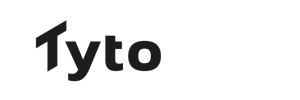A year of change: how Covid has shifted the European media landscape
By Luke Graham, Features Editor, Tyto
It has now been over a year since the World Health Organisation declared the outbreak of Covid-19 as a pandemic. In that time, the economy has shifted in some unexpected ways.
Since January, we have been cataloguing the pandemic’s impact on the media landscape in our key markets of Germany, France and the UK.
Some things are consistent across the European continent. For instance, Covid continues to dominate the headlines. Even after a year of pandemic stories, instead of fatigue about the topic, it’s still central to stories and so PRs have had to be inventive with their pitching around the virus.
Similarly, the pandemic has wreaked havoc on media organisations. Some newspapers and magazines have had to put their publications on hiatus and focus on their digital output. In the worst cases, media companies have had to furlough journalists, put them on part-time contracts or let them go altogether.
As a result, an industry that was struggling even before the pandemic is facing new challenges, and stretched, overworked journalists have even less time to listen to content pitches from PR agencies. As such, PRs have needed to be more creative and concise with their pitches and how they reach out to reporters. Journalists don’t have the time or patience to parse through long pitches, and many now prefer contributed bylines, written interviews or data that tells a clear, obvious and compelling story.
What’s more, how we contact journalists has changed. Many reporters are now working from home rather than in the newsroom and so are far away from their office phones. While in the UK and France it’s still possible to contact journalists via their mobile phones, journalists in Germany are more insistent that they be pitched mainly by email.
Our observations on the media landscape have exposed some other key differences. As an example, exclusives are not as common in France as they often are in other countries.
Meanwhile in Germany, print circulation has steadily declined, and several outlets are starting to introduce paid subscriptions to monetise their online content. This rotation from print media to digital was already evident in the UK and France before the pandemic and has accelerated in the past year.
Some companies may approach marketing in Europe as a single entity. However, it should be clear that PRs need to operate differently within each market in order to succeed and be sensitive to the issues facing journalists. Compassion and creativity have become critical skills, and the agencies that possess these qualities will deliver the most value for their clients.
Image ©Christian Lue, Unsplash.com



